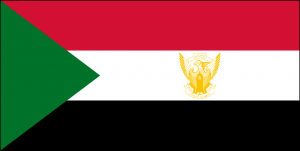Language/Sudanese-arabic/Grammar/Pronouns
Hi Sudanese Arabic learners! 😊
In this lesson, we will learn about pronouns in Sudanese Arabic. Pronouns are an essential part of the language and are used to replace a noun to avoid repetition. Let's get started!
Don't miss the chance to check out these pages as you wrap up this lesson: Negation, Gender & How to Use Have.
What are Pronouns?[edit | edit source]
Pronouns are words that replace a noun or noun phrase in a sentence. They are used to avoid repeating the same noun multiple times in a sentence or paragraph. In Sudanese Arabic, there are several types of pronouns, including personal pronouns, possessive pronouns, reflexive pronouns, and demonstrative pronouns.
Personal Pronouns[edit | edit source]
Personal pronouns are used to replace a noun that refers to a person or people. In Sudanese Arabic, personal pronouns can be divided into two categories, subject pronouns and object pronouns.
Subject pronouns are used as the subject of a sentence, while object pronouns are used as the object of a verb or preposition.
Here is a table showing the subject and object pronouns in Sudanese Arabic:
| Sudanese Arabic | Pronunciation | English |
|---|---|---|
| أَنَا | ana | I |
| انْتَ / انْتِي | inta/inti | you (singular) |
| هُوَ / هِيَ | huwa/hiya | he/she |
| نَحْنُ | nahnu | we |
| أَنْتُمْ / أَنْتُنَّ | antum/antunna | you (plural) |
| هُمْ / هُنَّ | hum/hunna | they |
Here is an example dialogue between two friends:
- Person 1: أَنَا زَعِلَان (Ana za'ilan) (I am sad)
- Person 2: لِيْشَ زِعْلَان؟ (Lish za'ilan?) (Why are you sad?)
- Person 1: شَغْلِيْ كَثِيْر (Shaghli kathir) (I have a lot of work)
Possessive Pronouns[edit | edit source]
Possessive pronouns are used to show possession or ownership of something. In Sudanese Arabic, possessive pronouns come after the noun they are describing.
Here is a table showing the possessive pronouns in Sudanese Arabic:
| Sudanese Arabic | Pronunciation | English |
|---|---|---|
| حُروفِي | hurufi | my letters |
| حُروفَكَ / حُروفَكِ | hurufak/hurufik | your (singular) letters |
| حُروفُهُ / حُروفَهَا | hurufuhu/hurufuha | his/her letters |
| حُروفُنَا | hurufuna | our letters |
| حُروفَكُمْ / حُروفَكُمْ | hurufakum/hurufakunna | your (plural) letters |
| حُروفَهُمْ / حُروفَهُنَّ | hurufuhum/hurufuhunna | their letters |
Here is an example dialogue between two friends:
- Person 1: وَيْنُ حُرُوفُكَ؟ (Wayn hurufak?) (Where are your letters?)
- Person 2: حُروفِي فِي الشَّنْطَةِ (Hurufi fi ash-shanta) (My letters are in the bag)
Reflexive Pronouns[edit | edit source]
Reflexive pronouns are used when the subject and the object of a sentence are the same. In Sudanese Arabic, reflexive pronouns come after the verb and are formed by adding the suffix "-na" to the end of a personal pronoun.
Here is a table showing the reflexive pronouns in Sudanese Arabic:
| Sudanese Arabic | Pronunciation | English |
|---|---|---|
| نَفْسِي | nafsi | myself |
| نَفْسَكَ / نَفْسِكِ | nafsak/nafsik | yourself (singular) |
| نَفْسُهُ / نَفْسَهَا | nafsuhu/nafsaha | himself/herself |
| نَفْسَنَا | nafsana | ourselves |
| نَفْسَكُمْ / نَفْسَكُمْ | nafsakum/nafsakunna | yourselves (plural) |
| نَفْسَهُمْ / نَفْسَهُنَّ | nafsahum/nafsahunna | themselves |
Here is an example dialogue between two friends:
- Person 1: شَغْلِيْ كَثِيْر وَمَا عِنْدِي وَقْت (Shaghli kathir wa ma 'indi waqt) (I have a lot of work and I don't have time)
- Person 2: خُذْ وَقْتَكَ وَرَاحَةً نَفْسِكَ (Khudh waqtak wa rahatan nafsik) (Take your time and rest yourself)
Demonstrative Pronouns[edit | edit source]
Demonstrative pronouns are used to point to specific nouns and indicate their distance from the speaker. In Sudanese Arabic, there are two types of demonstrative pronouns, close and far.
Here is a table showing the demonstrative pronouns in Sudanese Arabic:
| Sudanese Arabic | Pronunciation | English |
|---|---|---|
| دَا / دِي | da/di | this (close) |
| دُو / دُونَا | du/dunna | these (close) |
| دَكَّ / دَكِي | dakk/daki | that (far) |
| دُوكَّ / دُوكُمْ / دُوكُنَّ | dukk/dukum/dukunna | those (far) |
Here is an example dialogue between two friends:
- Person 1: دِيْ كِتَابِي الْحُجَّةِ (Di kitabi al-hujjah) (This is my evidence book)
- Person 2: دَا كَانَ خَطَّكَ حَلْو (Da kan khattak halaw) (This had your nice handwriting)
To improve your Sudanese Arabic Grammar, you can also use the Polyglot Club website. Find native speakers and ask them any questions!

